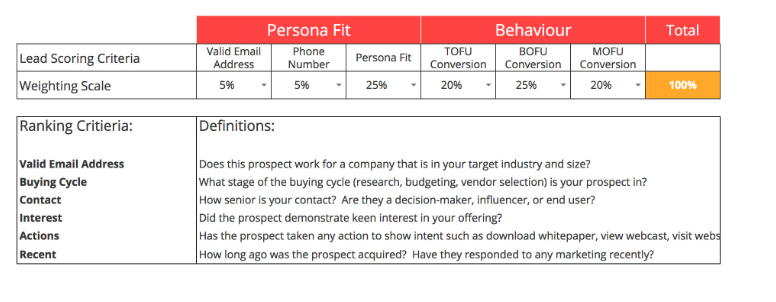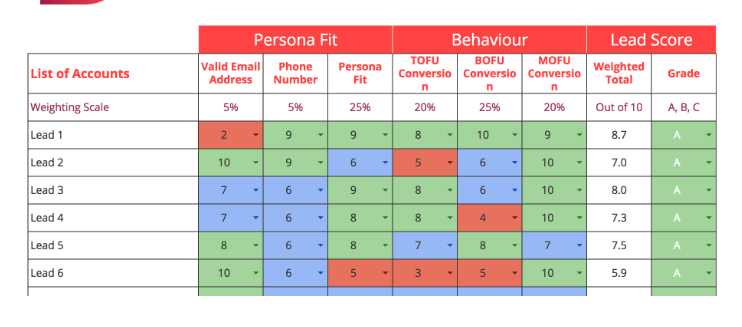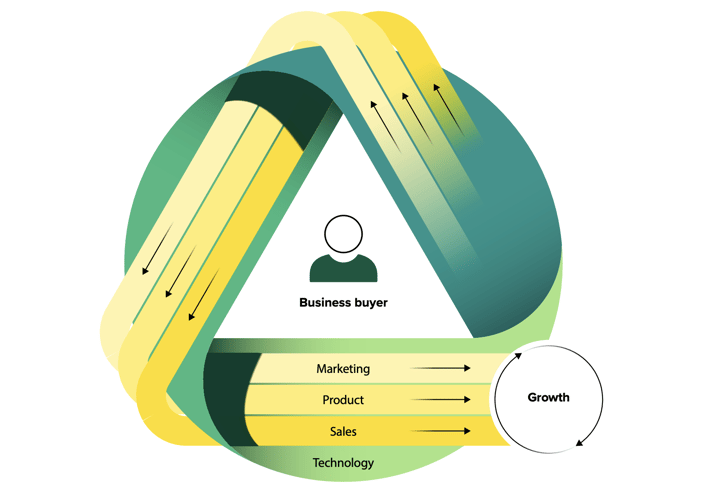Building a customer centric growth strategy for your startup
Believe it or not, there has been a lot of research done and all of these projects result in the same conclusion: When you focus on solving for your customer, your business will do better. Surprising, right?
Acquiring new customers can cost up to 5 times more than keeping customers, and a 2 percent increase in customer retention has the same effect on your bottom line as cutting costs by 10%.
The customer at the heart of your work
Putting the customer at the heart of everything you do, product, marketing, sales and customer service, enables a kind of growth that can’t happen when you put the customer’s needs second. Before you can do that however, you need to know who they are.
We spoke about the importance of creating a buyer persona before. The type of customer you really want to close and one that is good for your business. Why? Think about the largest commercial segment; women aged 25 to 45. Really? What is the difference between a woman aged 25 to a woman aged 45? Would you market the same to me now as you would 10 years ago when I was a student?
Create a buyer persona for your startup
Who does your sales team like to speak with? Which customer has a solid lifetime value? For SaaS businesses, churn is one of the most important KPI’s. Which type of customer has a low churn? On the other hand, who becomes a burden for your support team? There is always a type of customer that you know will make feature requests that you can’t and shouldn’t accommodate because they do not fit in your roadmap. In short, you’re looking to build a buyer persona.
The buyer persona is a profile that you will verify over time. It’s important that when you describe them they should come alive like they are in the room with you. This is a person who you’ve given name and a face, a person that you will market to, sell to and build products for.
How do you do this? You ask yourself the right questions. Think for example about the deals you’ve closed over the past 12 months. Who were the people reaching out to you first? Who were the key stakeholders? And what challenges did you solve for them?
These questions are the first in helping you profile your buyer persona. There are a lot more you want to ask yourself and eventually you will be able to tell a story. These questions are the first step in helping you create what we call your gut-persona. The hard work isn’t done yet, you’ll be verifying this persona over time. All this means is that you check whether your assumptions match up with the data in your CRM system or other research you have.
Once you have the personas ready, they should look familiar because most likely you’re already selling to them. If you’re in the early stages of your business, you’re already talking to them or they may have even inspired you to start your business in the first place.
What does this look like you might wonder? Meet Steve.

We talk to Steve’s a lot and he is the reason we founded BusinessBrew. When we decide on how we deliver a workshop or offer a new service, we ask ourselves whether what we do is helpful for Steve.
Create a customer journey map for your startup
Creating your gut persona was step one. Now step two: Understand what these customers want from you at what time. Build a customer journey map. What are the important touchpoints a customer will have with you throughout their lifecycle? How do you serve them at each of these stages?
Consider for each of these stages the timeframe, actions a user needs to complete, questions they need answered, what positive moments improve the experience, what frustrations they might have and what opportunities you have to make the experience better. What kind of research does your customer do during their consideration phase? How can you make onboarding a more positive experience?

Source: AboutInbound
Map the stages and what they mean for each of your personas and you’ll end up with a comprehensive list of their needs, content you can create to help them find you and your product, and actions you can take to successfully progress customers through these stages.
Startup Personas and Internal Alignment
Now you think the hard work is done right? Well, it might be. If you made sure that everyone across sales, marketing, product and customer experience agrees. There is no such thing as an ideal sales persona, a different marketing persona and a third customer persona. Everyone in your business should have the same image of that same ideal customer. Keep track of how your colleagues interpret your persona, these personas tend to start living their own life across different departments over time as your startup grows.
Your persona and your customer journey map together will be the center of everything you do. It will determine how you engage with your customers and what you prioritize in the business. What content should marketing create to help sales get good leads? What conversation should sales have with prospects to qualify good customers that are set up for long-term success with the product? What features does your product need to keep serving these customers?
Lead Scoring and a Customer Happiness Index
So far, you’ve build your persona, you’ve identified the buyer journey and every stakeholder in your business agrees on these points. All activity in your business now revolves around your customer. The next essential part of building a customer centric growth strategy is determining who should speak with what customer and when.
Combine information on which actions a customer has taken as well as how closely they match your persona. Then determine who your team should focus on. This goes for prospects but also for existing customers. When should a lead be handed over to sales? What defines a Marketing Qualified Lead and what does a Sales Qualified Lead look like? Which customers are likely to churn regardless of the time your customer engagement team invests in them? Where will your sales or customer service team have the most impact?
Set up lead scoring so sales and marketing agree on a handover process. Set up a customer happiness index so that customer experience spends their resources wisely. You’ll do this by determining which identifiers and which behaviours fit in with your buyer persona. Decide how important each of these identifiers are and how heavily they weigh in rating the fit of a prospect or customer.
Work with a score from 0 to 100 and when you set up the leadscore or customer happiness index, calculate the many ways a customer can get to 50, 75, 90 and 100 points. Determine what it means when a customer gets to these scores and how it impacts you working with them.
You don’t necessarily need software to score your leads. Of course, it’s easier when you can automate this work but investing in software isn’t always an option when you’re running a startup. You can setup an excel/ numbers/ Google sheet with lead scoring rules and manage your leads there.
It could look like the example below. Start off with your identifiers and how you weigh them.

Next up you’ll add your leads and you’ll score them on each of the identifiers from 1 to 10 resulting in an weighted score and an overall grade to inform your ongoing engagement with these leads.

Build your own customer-centric growth strategy
To summarise:
1. Build your gut persona, and verify it over time.
2. Map the customer journey and optimize each and every step.
3. Set up lead scoring and a customer happiness index to determine where to invest your time.
Those three steps get you on your way to building a customer-centric growth strategy.





